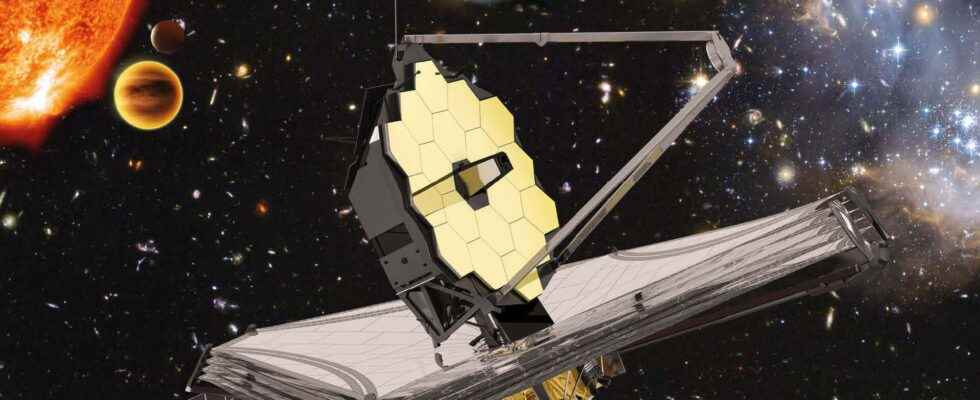After launching from Guyana on December 18, the James-Webb Space Telescope will be sent 1.5 million kilometers from Earth on a month-long trip. The aircraft and its various instruments will be fully deployed during this period, before being put into operation at the start of 2022.
After its launch from the Kourou base in Guyana, December 18, the James-Webb Space Telescope (JWST) will begin a long journey. The new device from NASA andESA will take the direction of the point of Lagrange L2, located 1.5 million kilometers from the Earth in the direction opposite to the Sun. During the 29-day journey to achieve this goal, the telescope will fully deploy its various instruments, as demonstrated by NASA in a video released on November 12.
Explanatory video of the JWST deployment timeline. © Nasa, ESA, Northrop Grumman
A month under pressure
These four weeks of travel will not be easy for the engineers in charge of the proper functioning of the telescope. The JWST will be stored in the fairing of a Ariane 5 rocket, from which he will separate 30 minutes after take-off. A few tens of seconds later, at H + 31 minutes, the solar panels providing power to the telescope instruments will be deployed, followed by a directional antenna. Seventy-two hours after launch, the huge sun visor protecting the mirrors of the Sun’s radiation will be gradually extended.
After 10 days in space, the secondary mirror will be positioned, while the 6.5 meter diameter golden hexagon serving as the primary mirror will be assembled on the 13th.e day. The James-Webb telescope will thus continue its adventure towards the point of Lagrange L2, which it should reach on January 16, 2022, from where it will begin his first observations. The mission of James-Webb Space Telescope, considered as the successor ofHubble, will extend over a duration minimum of 10 years and should be a real Leap Forward in the observation ofUniverse.
Interested in what you just read?
.
fs3
